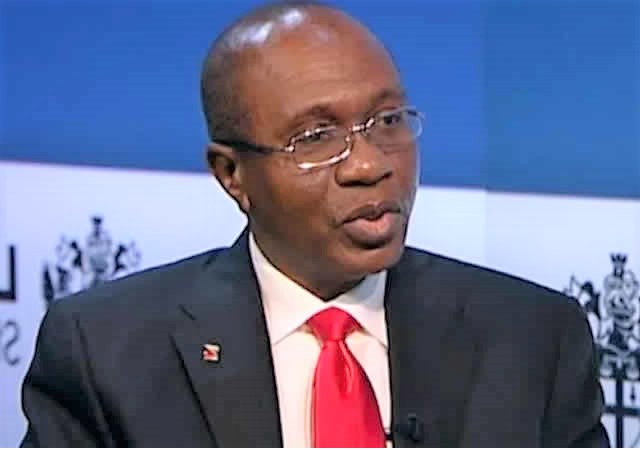As the Monetary Policy Committee (MPC) converge on Abuja for its first meeting in 2021 next Monday and Tuesday, January 25 and 26, financial experts weigh on the options and say the sentiments favour a decision to leave the controlling monetary policy parameters unchanged.
During its last meeting in November 2020, the MPC opted to maintain the monetary policy rates as they were in September, despite the country’s economy slipping into the second recession in the five years of the Muhammadu Buhari administration.
The committee said it considered the decision as the best option to help the economy reverse the current recession and achieve medium-term macroeconomic stability.
Economic indicators
Prior to the MPC meeting in November, the National Bureau of Statistics (NBS) had just reported that the country’s headline inflation rose for the 14th consecutive month (year-on-year) to 14.23 percent in October from 13.71 percent in September.
Besides, the statistics agency also confirmed the second recession after the economy contracted with negative growths for two consecutive quarters.
In the third quarter of 2020, the country’s gross domestic product (GDP) (the aggregate value of goods and services for the period) contracted to -6.1 percent, and in the fourth quarter to -3.62 percent.
Expectations were that the MPC would adjust the monetary parameters during its November meeting to reflect the reality of those significant developments.
Instead, the MPC at the end of the two-day meeting left the lending rate, also known as the monetary policy rate (MPR) at 11.5 percent, and the asymmetric corridor of +100/-700 basis points around the MPR.
The committee also opted to maintain the cash reserve ratio (CRR) at 27.5 percent and the liquidity ratio at 30 percent.
The MPR is the controlling rate approved by the CBN for commercial banks’ lending activities for the period, while the CRR is the minimum deposit a commercial bank must hold as reserves in its account with the CBN.
Justifying the MPC’s decision, the CBN governor, Godwin Emefiele, said the committee took into consideration the government’s spending and the apex bank’s expansionary interventions to support the economy’s recovery from the recession.
2021 Appropriation Act
He said reducing the lending rate by banks from the prevailing 11.5 percent would trigger inflation as it would encourage banks to give out more loans, increase cash in circulation and fuel further depreciation of the Naira.
Objectives of 2021 Appropriation Act
But, the MPC meeting would be held against the background of the commencement of the implementation of the provisions in the approved 2021 Appropriation Act in line with the government’s January-December budget cycle.
While presenting details and highlights of the ‘2021 Budget of Economic Recovery & Resilience’ in Abuja on January 12, Minister of Finance, Budget and National Planning, Zainab Ahmed, said the objectives were to accelerate the economic recovery process, promote social inclusion and strengthen the resilience of the economy.
With a deficit component of over N5.6 trillion, which requires a plan to borrow massively from domestic and external sources to makeup, financial experts say the MPC would consider a lending rate that would encourage borrowing to reflate the economy while guarding against fueling inflation.
Apart from the significant drop in crude oil prices at the international market, the subsisting output cut decision by the Organization of Petroleum Exporting Countries (OPEC) has resulted in declining revenues from oil exports available to finance the budget.
To achieve the objectives of 2021 Appropriation Act, experts say the overarching consideration of the MPC members would monetary policy rates that would create an environment for small and medium enterprises (SMEs), which constitute dominant players in the economy, to thrive.
With the inflation rate currently at about 15.75 percent as of December, 2020, contrary to the government’s aspiration of a single digit, nothing appears to have changed to warrant an adjustment to the monetary policy rates now.
Experts opinion
Analysts at Cordros Research agency are of the view that the committee would most likely vote in favour of retaining the rates during its meeting.
The agency said the committee would want to continue to support the adoption of unorthodox measures as CRR debits, Loan-to-Deposit Ratio (LDR) and direct intervention in employment-stimulating sectors to influence macroeconomic outcomes and ultimately attain macroeconomic stability.
With CRR at 27.5 percent, banks are expected to have a minimum of that value of their cash deposits in reserve with the CBN. Failure to meet the monetary policy directive.
In 2020, several banks were sanctioned by the CBN with huge debits to their accounts for failing to meet their CRR targets.
The debited amounts were added to the affected bank’s amounts available to be given as loans to customers, rather than in the reserve account with the CBN.
On LDR policy, which fixed the rate of bank loans against deposits at 65:35 percent, the CBN said, the policy would make more money available for lending to customers to use in financing economic activities to grow the economy.
“We also expect the committee to reiterate its resolve to keep yields at low levels in the near term to compel deposit money banks to boost private sector credits, while also easing deficit financing pressures at a time when revenue from oil and non-oil sources have come serious pressure.
“We expect the committee to assess the developments in the domestic and external macroeconomic and financial markets since its last meeting in November and provide guidance on the path of monetary policy in 2021,” Cordros Research said in its report.
The projection ahead of the MPC meeting is that members would opt to retain the monetary policy parameters unchanged to give both the monetary and fiscal authorities the opportunity to weigh the impact of their respective policy benchmarks in the 2021 budget before considering a review.



